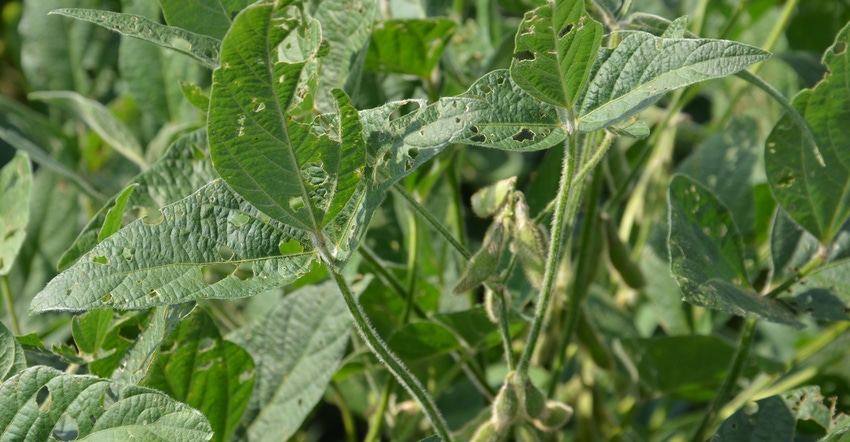
Ask any soybean grower if he would like soybean plants with four soybeans per pod, and he’s likely to answer yes. Steve Gauck says there’s nothing wrong with four seeds per pod if the seeds are large enough. He believes seed size can hold one of the keys to higher soybean yields.
“Three soybeans per pod are enough if they are large in size,” says Gauck, Beck’s sales agronomist. He’s located near Greensburg, Ind. Beck’s sponsors Soybean Watch ’18.
Scouting the Soybean Watch ’18 field before harvest, Gauck found plants with some pods that contained four beans. There were also a few pods with two beans. Primarily, though, most pods had three beans.
What determines seed size
“Rains in late August and good growing conditions into September as the crop matured helped promote larger seed size,” Gauck says. “You can harvest very good soybean yields if plants average three soybeans per pod and the beans are relatively large.”
Seed size is somewhat impacted by variety, he notes. Some varieties are noted for larger seed size; others for smaller seed size. Larger-seeded varieties have fewer seeds per pound, while smaller-seeded varieties result in more seeds per pound.
“Weather conditions late in the season also play a role in final seed size,” Gauck says. “If it turns dry and stressful, varieties which typically have larger seeds won’t have as large seeds as they usually do. On the flip side, better weather conditions result in even larger seed size.”
More pods per plant
Pods per plant is also an important contributor to yield, Gauck says. Expect interaction with plant population per acre when examining the average number of pods on each plant, he adds.
Populations of 80,000 plants per acre tend to result in plants with more branches and more pods. “That’s what we found with the Soybean Watch field in 2017,” he says. “Slugs and too much water reduced population, but the field still yielded 50 bushels per acre.”
This year’s Soybean Watch field averages near 120,000 plants per acre in most of the field. There may not be as many pods per plant as in the ’17 field, but there may be more total pods per acre.
“One thing we noticed this year in the Soybean Watch ’18 field was that plants reacted to rain and good growing conditions in mid- to late August,” Gauck says. “Most plants in fields where conditions were good continued putting on pods near the top of plants late into the growing season. The top nodes of most plants have pods with beans inside.”
Extra pods in the top of plants can also contribute to higher yields, he says. Good weather conditions helped result in decent-size beans in those top pods as well, he concludes.
About the Author(s)
You May Also Like




